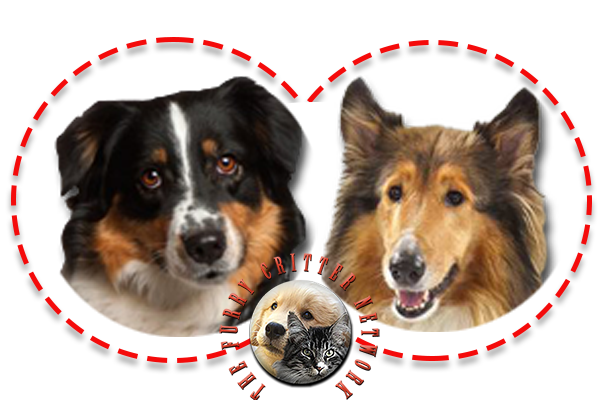Behavior
Australian Shepherds are easy going, perpetual puppies that love to play. Courageous, loyal and affectionate, they are excellent children's companions that are great with active children. A devoted friend and guardian, for they are naturally protective. Very lively, agile and attentive - they are eager to please, with a sixth sense about what the owner wants. Australian Shepherds are highly intelligent and easy to train.
This breed is not recommended for apartment life. They are moderately active indoors and will do best with at least a large yard. The coat is easy to groom and needs little attention. Brush occasionally with a firm bristle brush and bathe only when necessary. This breed is an average shedder.
Health
Many diagnostic tests are available for concerned Aussie owners to check the overall health of an Aussie. Also, the Orthopedic Foundation for Animals (OFA) has an extensive database to track results and provide statistics for the following concerns: hips, elbows, heart, patellar luxation (knees), and thyroid (autoimmune) disease. The OFA database also includes the results for eye exams performed by a Canine Eye Registration Foundation (CERF) veterinarian, but only if the owner of the Aussie submits the results. This database is a great resource to investigate the lineage and related health of the progenitors of some dogs, at least regarding hip ratings.
Many tests have been developed by, or are processed at, laboratories to check for the 11 health concerns that plague the Australian shepherd breed. Some of those labs are Optigen, Animal Health Trust, Endocrine Diagnostic Center, Animal Health Laboratory, Washington State University Veterinary Clinic, Vet DNA Center, and HealthGene. These labs might perform one or many of the tests that have been developed.
Tests or evaluations have been developed for:
Hip and Elbow Dysplasia
Patellar Luxation (knees)
Collie Eye Anomaly (CEA)
Progressive Retinal Atrophy (PRA)
Thyroid (Autoimmune)
Congenital Cardiac (heart)
Multi Drug Resistance Gene (MDR1)
Hereditary Cataracts (HSF4)
Pelger Huet Anomaly
Coat Color (red carrier/red factored)
Dilute Gene Carrier
DNA testing to either certify parentage (CP) or to verify parentage (VP) for Australian shepherds is also another test that can be performed and as of January 2010 all adults producing a litter will be required to be DNA tested to allow a breeder to register a litter with the Australian Shepherd Club of America (ASCA).






